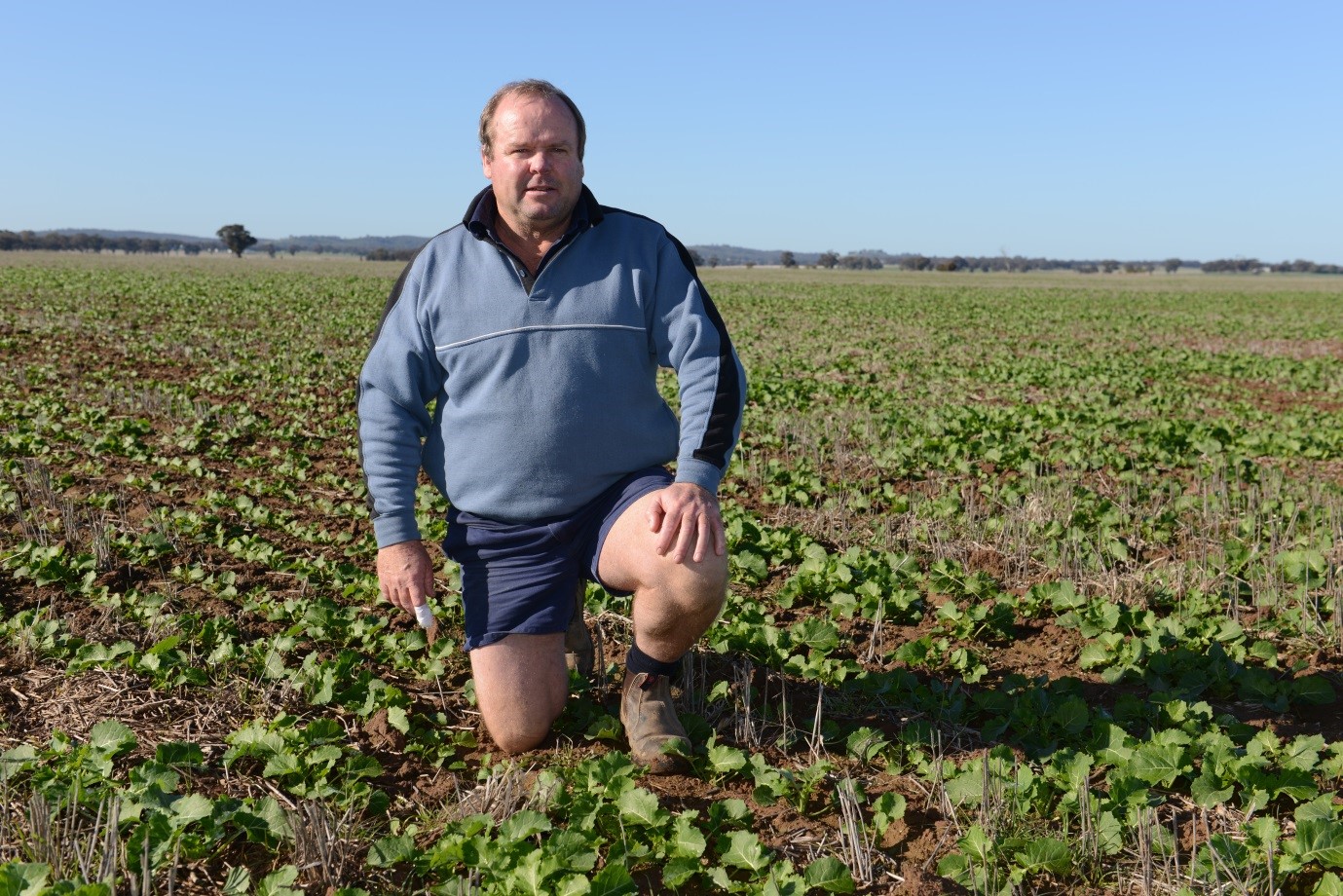The arrival of new Butisan has allowed Peter Burge to control annual ryegrass into a canola phase.

Like so many growers across all cropping areas, Peter Burge of St Arnaud, in central Victoria, has had to broaden his approach to controlling annual ryegrass and find new ways to fight it over the last few seasons.
“When we started farming years ago, you didn’t need to worry about it too much”, he says. “You never had the resistance problem that we have now.”
In one particular paddock, annual ryegrass seemed to be winning the war. Peter says the paddock needed to be chemically fallowed in 2016 because the dense ryegrass population was resistant to the Group B chemistry he’d previously relied on.
“We had to give away the cropping in these sorts of paddocks because there was just too much rye,” he says. “Because of our spread of soil types, we’ve been pushing this sort of country to get us home in the drier years. But it just got to the point where the ryegrass was beating us, so this paddock was chemically fallowed last year.”
Now Butisan®, the new pre-emergent canola herbicide from BASF, has turned things right around.
As a Group K product, Butisan allowed Peter to target the Group B resistant ryegrass early and he notes that it also provided good residual activity into the season. If Butisan had not been available, Peter says the paddock he used it in would have been wall-to-wall ryegrass during this canola phase.
“If you knew how much ryegrass was in the paddock before, you'd understand why I’m very happy with the results.”
The strong initial and lasting residual control also showed Butisan’s ability to cope with stubble or trash. “This paddock probably had a 40 to 50 per cent trash load,” says Peter, “so it’s worked really well in a situation like that.”
The Butisan was applied right in front of the seeder, set up with knife-point and press wheels to sow Clearfield® canola. An Intervix® and clethodim tank-mix was applied post-emergence for both grass and broadleaf weed control.
“Nothing is a silver bullet, but we've got to minimise our populations and the different chemical groups are allowing us to do it,” Peter says. “We were running into trouble until Sakura® came along, and now we've got the Butisan in the toolbox as well. We've just got to manage it properly. It does work – the proof is right here.”
Peter says the new ‘premium pre-emergent’ chemistry is vitally important in achieving good weed control.
“I used to sit down at the start of cropping and think, like anyone, you’ve got to watch your costs. You start off with minimal things and then we were finding later on in the season we couldn't control the ryegrass. We just got to a stage where we couldn't manage it well enough and it was affecting our yields.”
“In a year like this we’ve sat down and gone in with the better pre-emergents. With Butisan, I think that’s the way we've got to work from now on. We've got more and more pre-emergent herbicides to use. We've just got to get in and use them.”
Now that Butisan is available for the canola phase, Peter feels he’s better equipped to build a more varied and effective weed control program across the whole rotation.
“We are getting more different products with different chemistries we can use that will probably let us keep cropping instead of going push, push, push and then hitting a wall.”